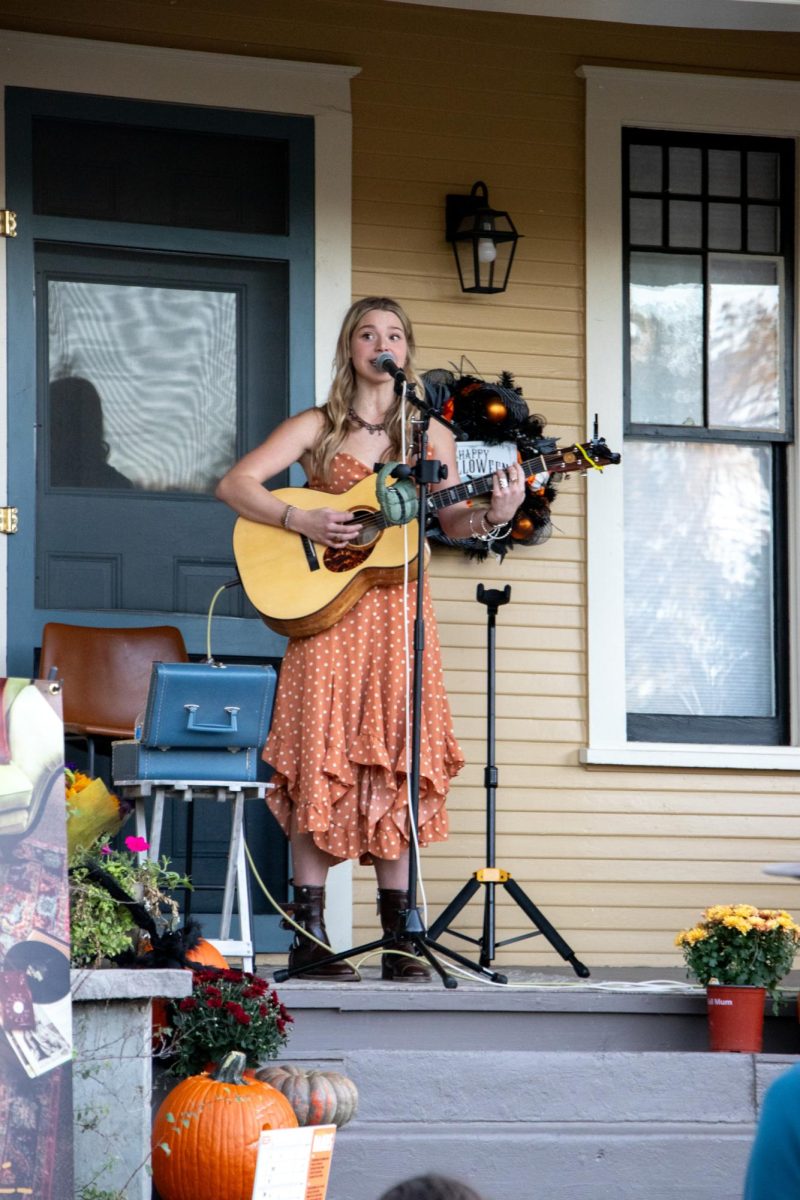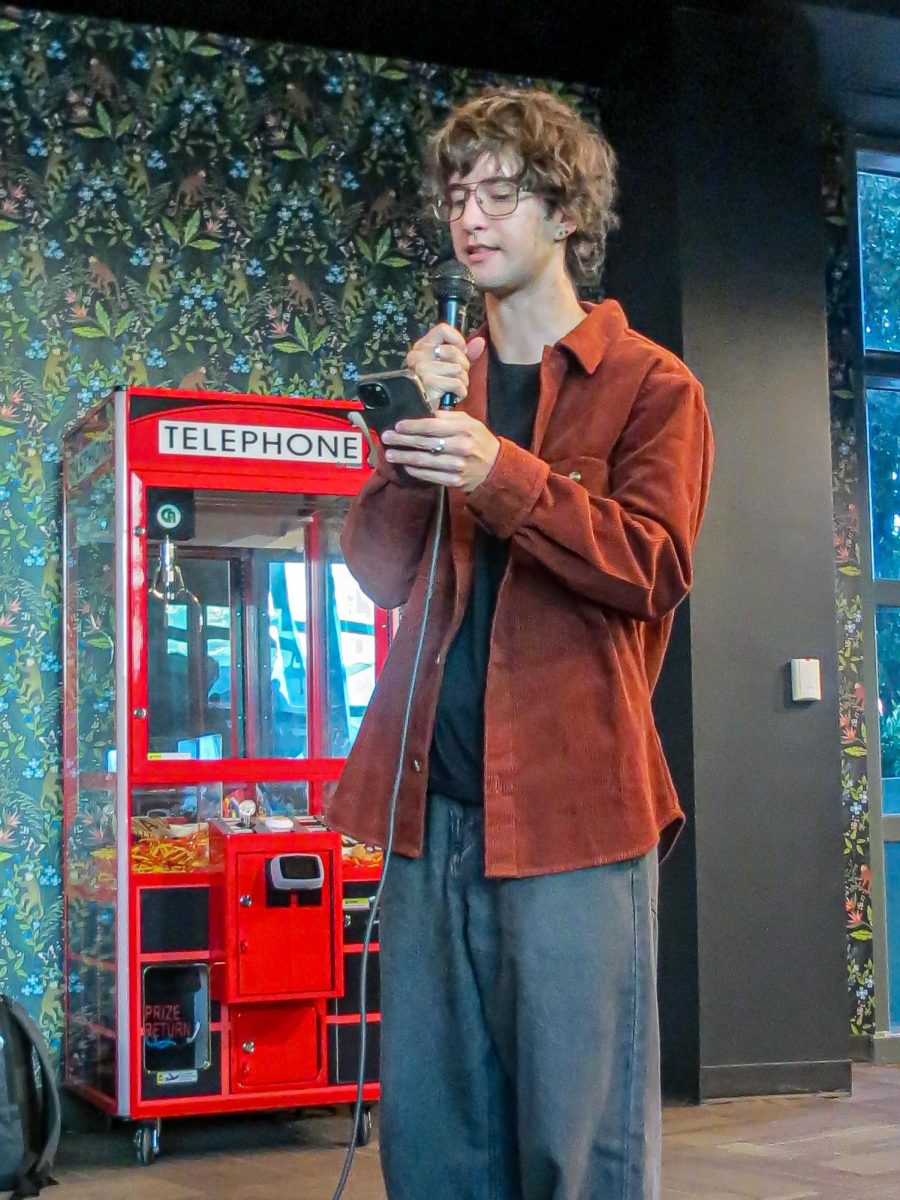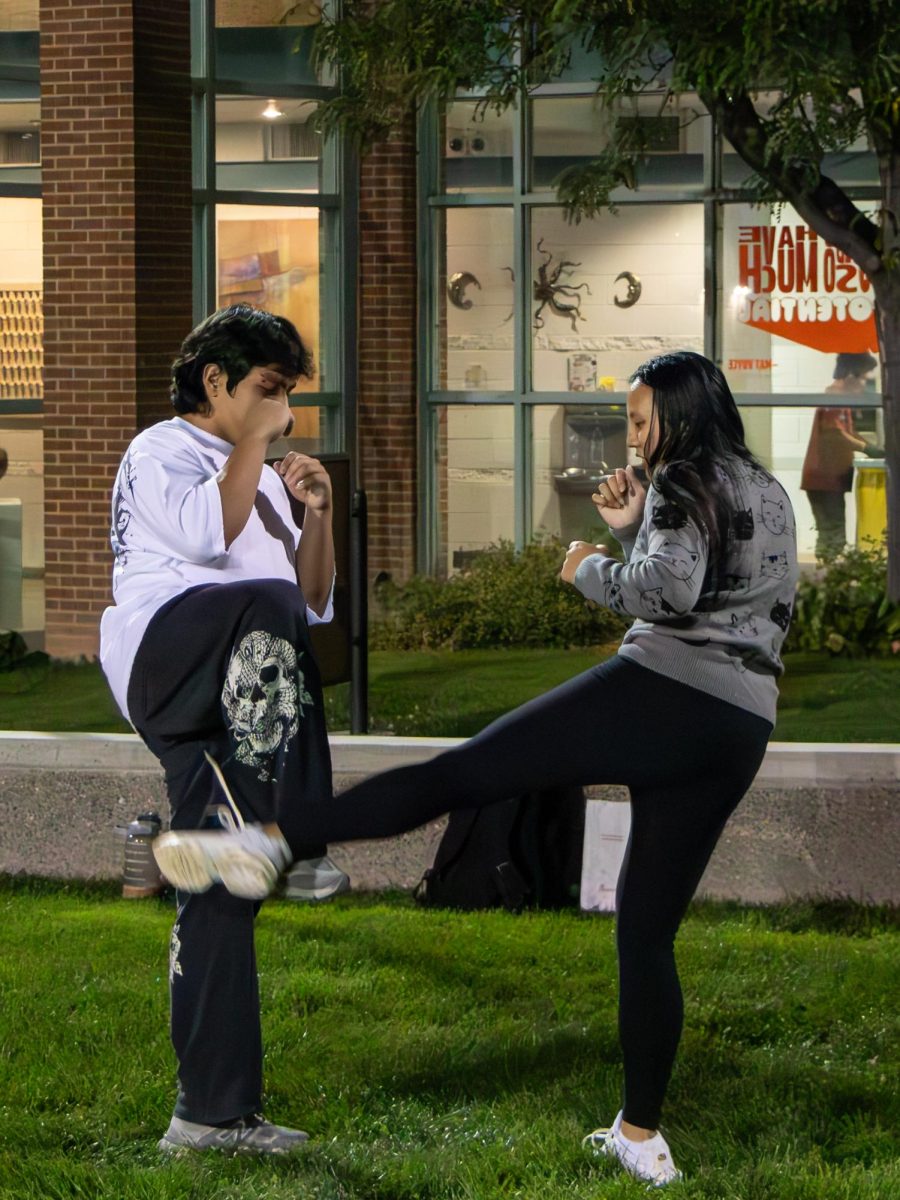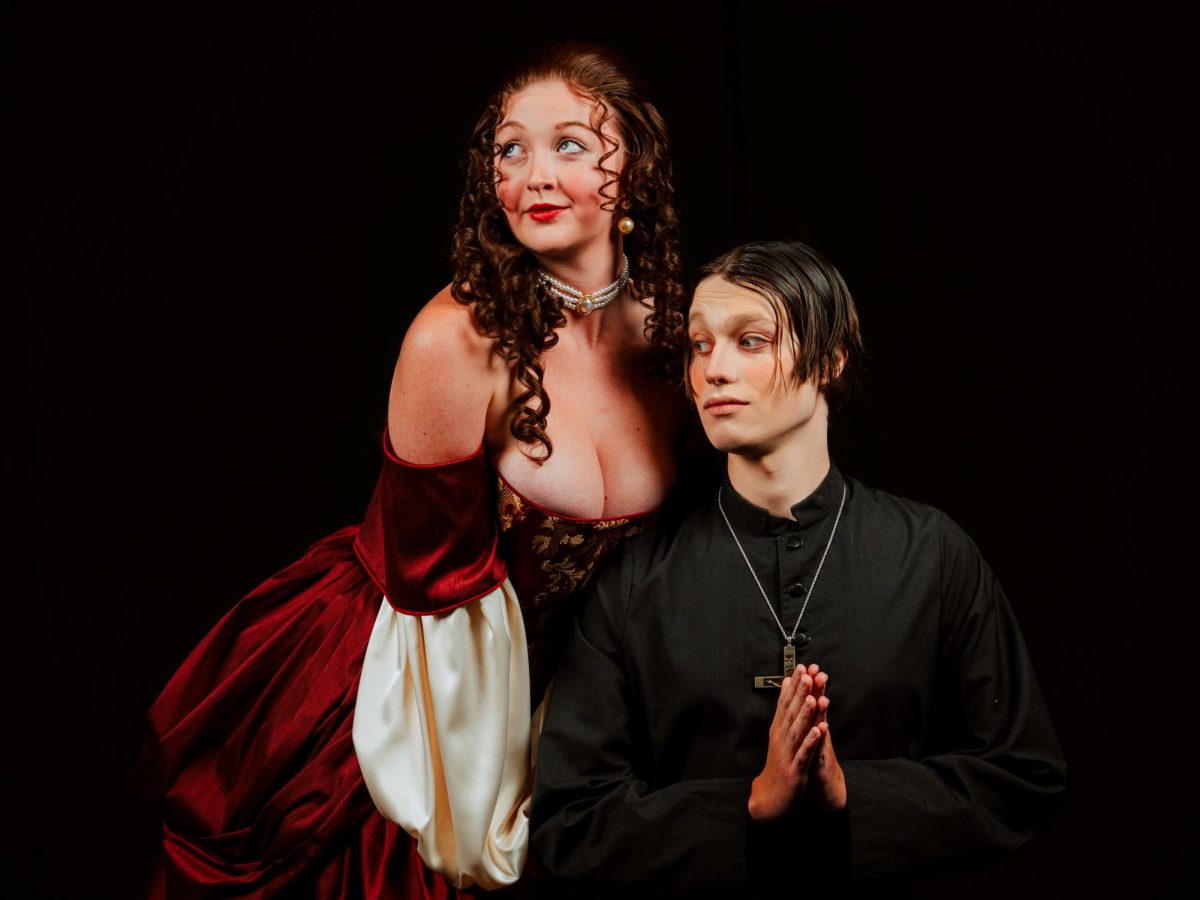The new theatre is well on its way, as students can observe when near the southwest part of campus. Towering over the nearby fine arts building and Dominguez Hall, the new theatre is designed to better equip the modern needs of what performing arts students will be working with in their future careers and to invite traveling shows and concerts to campus.
“It will be a very tall building. One of the things that I didn’t know, until a couple years ago when I started to get neck deep in the realm of theater construction, was the fact that these fly houses above the stage have to be twice the height as the stage height. And this theater is unlike some, where they built back from the stage. The challenge with that is the quality of the experience and the quality of being able to observe a facility or a theater production is really impaired by those really long sidelines. So instead of that we’re going up,” President John Marshall said.
The theatre is planned to have 860 seats with a main, club and balcony level for viewing. Colorado Mesa University (CMU) administration projects that the theatre to be a valuable community resource to bring more traffic into the area.
“The first thing we wanted to do was provide a home for a world class theater, musical theater and music programs. Beyond that, from a community standpoint, we clearly want to be able to provide a venue for the Grand Junction symphony, western Colorado Chorale and some of those cultural assets for the community. But also, we’ve never been able to attract all these shows that are traveling between Denver and Salt Lake these off Broadway productions. We think there’s going to be an opportunity for us with this facility to be able to attract some of those shows,” Marshall said.
While the university will benefit from the economic and reputational boom of having the only professional theatre between Denver and Salt Lake City, students get to work with some newer technology and amenities than currently available in Robinson Theatre.
“This theater was built in the ‘60s and hasn’t really been updated much since. If you take a walk on our stage floor it is uneven and sagging. If you go down to the pit, you can see a ton of water damage from the past 60 years. We’re also missing a lot like an actual catwalk or moving lights. And so to prep them for the real world, I would love to give them a venue that best emulates that which we don’t quite have right now. The new theater hits all of those check marks,” Assistant Professor of Scenic and Lighting Design Katherine Stepanek said.
There is also room for collaboration between the traveling professionals and CMU students who get to observe and work with these companies.
“This will get our students in contact with a lot of professionals. Because right now they have to basically leave the western slope to see professionals who are not their teachers. Right now I take students with me to all of my outside jobs, but the new theater will solve that if we turn it into a roadhouse that no one will rent this place,” Stepanek said.
On the financial side, the project cost $53 million in total, but the university was able to mostly subsidize that cost with state backing. The Colorado General Assembly Joint Budget Committee granted CMU $39.5 million while CMU invested $5.5 million and raised $8 million from private investors.
“The funding, which is the largest lump sum CMU has ever received from the state, will allow the university to continue to grow as a regional cultural destination as well as significantly improve the assets available to future performing arts students,” CMU Public Relations Director Kelsey Dudley said in a statement on CMUnow.
The theatre is currently set to be completed by the start of the Fall 2024 semester and a CMU Theatre production is in the works to be performed three weeks into the new school year. But even with the new theatre, the university is not abandoning Robinson Theatre and plans to utilize it in some way, even if the exact details remain to be determined.
“Currently, all of our money and time and interest and attention and everything that we have is going into the new space. Once that is up and running, we’re gonna look at Robinson and see we can’t do much to it. But could we turn it into a better learning environment somehow. Now that it’s not rented out every weekend, the music, dance and theatre departments can all use it more,” Stepanek said.









